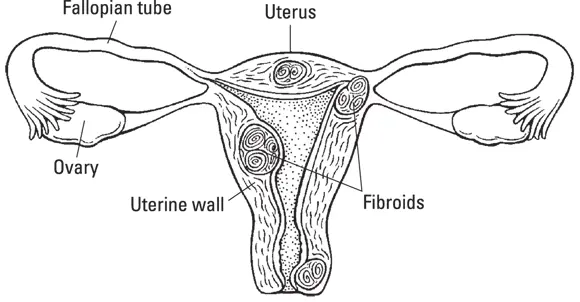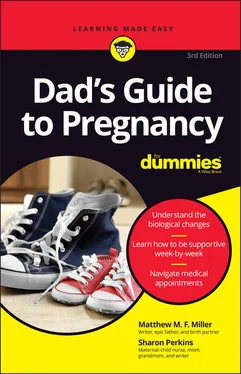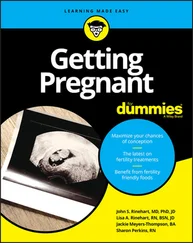Sharon Perkins - Dad's Guide to Pregnancy For Dummies
Здесь есть возможность читать онлайн «Sharon Perkins - Dad's Guide to Pregnancy For Dummies» — ознакомительный отрывок электронной книги совершенно бесплатно, а после прочтения отрывка купить полную версию. В некоторых случаях можно слушать аудио, скачать через торрент в формате fb2 и присутствует краткое содержание. Жанр: unrecognised, на английском языке. Описание произведения, (предисловие) а так же отзывы посетителей доступны на портале библиотеки ЛибКат.
- Название:Dad's Guide to Pregnancy For Dummies
- Автор:
- Жанр:
- Год:неизвестен
- ISBN:нет данных
- Рейтинг книги:5 / 5. Голосов: 1
-
Избранное:Добавить в избранное
- Отзывы:
-
Ваша оценка:
- 100
- 1
- 2
- 3
- 4
- 5
Dad's Guide to Pregnancy For Dummies: краткое содержание, описание и аннотация
Предлагаем к чтению аннотацию, описание, краткое содержание или предисловие (зависит от того, что написал сам автор книги «Dad's Guide to Pregnancy For Dummies»). Если вы не нашли необходимую информацию о книге — напишите в комментариях, мы постараемся отыскать её.
Dad’s Guide to Pregnancy For Dummies
Dad’s Guide to Pregnancy For Dummies
Dad's Guide to Pregnancy For Dummies — читать онлайн ознакомительный отрывок
Ниже представлен текст книги, разбитый по страницам. Система сохранения места последней прочитанной страницы, позволяет с удобством читать онлайн бесплатно книгу «Dad's Guide to Pregnancy For Dummies», без необходимости каждый раз заново искать на чём Вы остановились. Поставьте закладку, и сможете в любой момент перейти на страницу, на которой закончили чтение.
Интервал:
Закладка:
When ovulation is most likely to occur, based on her cycles
Symptoms that indicate ovulation is imminent
Premenstrual symptoms, including mood changes
Some apps go a lot further — and cost a whole lot more — by synching the app data with monitors they sell to track your temperature, saliva, or cervical mucus. These can get quite pricy.
If you want to determine when ovulation occurs in a less techy way, you can use ovulation prediction kits, which measure the amount of LH in your partner’s urine to determine when ovulation is about to occur. These tests can work well if your partner has regular cycles and a good idea of when she usually ovulates, but may not work at all for women with PCOS, who often have abnormally high LH levels. (For more on this, see “ Polycystic ovary syndrome,” later in this chapter.) They can also get pretty expensive if your partner has irregular cycles and no idea when she’s going to ovulate. You can go through a lot of expensive strips in this case.
Evaluating Health to Get Ready for Parenthood
Some health issues and bad habits can make it harder to get pregnant. A few months before trying to get pregnant, take an inventory of your behaviors and health issues and get yourselves into the best shape possible, not only so that you can get pregnant without difficulty but also so you’ll be healthy new parents.
 Checking out your physical health before trying to get pregnant isn’t difficult. See your doctor, let him know you’re trying to get pregnant, change any medications that may affect fertility, and run some blood tests.
Checking out your physical health before trying to get pregnant isn’t difficult. See your doctor, let him know you’re trying to get pregnant, change any medications that may affect fertility, and run some blood tests.
Discovering female health issues that affect conception
Many female health problems can cause fertility difficulties. Some affect egg production and the menstrual cycle; others affect egg transport and implantation. The good news is that you can improve many of these problems after you identify them.
Sexually transmitted infections
Among the biggest fertility busters in the age of sexual freedom are sexually transmitted infections (STIs) , formerly known as sexually transmitted diseases (STDs). The following STIs can affect female fertility in these ways:
Chlamydia, if not treated promptly, increases the risk of pelvic inflammatory disease (PID) by 40 percent. PID damages the fallopian tubes. Women with PID are seven to ten times more likely to have an ectopic pregnancy. Eighty percent of women who’ve had chlamydia three or more times are infertile.
Gonorrhea also increases the risk of PID and ectopic pregnancy.
Human immunodeficiency virus (HIV), if untreated, can affect male and female fertility and increase the risk of pregnancy loss. Antiretroviral treatment before trying to get pregnant can significantly reduce the risks. An undetectable viral load can reduce the risk of transmission to your child during pregnancy to less than 1 percent.
Human papillomavirus (HPV), also called genital warts, may increase the risk of early miscarriage, and could affect sperm motility in some cases. To be safe, have treatment before trying to get pregnant.
Syphilis can cause miscarriage, stillbirth, developmental delays, and blindness in your unborn child.
 STIs need to be treated early with antibiotics before damage is done to the fallopian tubes. Having a hysterosalpingogram (HSG), a dye test to assess the patency of the tubes, is a good idea if your partner has any concerns about whether her tubes have been damaged in the past.
STIs need to be treated early with antibiotics before damage is done to the fallopian tubes. Having a hysterosalpingogram (HSG), a dye test to assess the patency of the tubes, is a good idea if your partner has any concerns about whether her tubes have been damaged in the past.
Endometriosis
Endometriosis, which is growth of the tissue that lines the inside of the uterus, called the endometrium, in places it doesn’t belong, is common; 5.5 million women in the United States suffer from it, and 40 percent of women with endometriosis have fertility issues.
Endometriosis tissue bleeds at the time of the menstrual period and leads to scarring and pain. Endometrial implants can be removed in some cases, but they tend to recur. Most endometriosis is found in the pelvis, near the uterus, but it can turn up in some odd places, like the lungs. In vitro fertilization (IVF) can increase the chances of pregnancy in women with endometriosis.
Polycystic ovary syndrome
Polycystic ovary syndrome, or PCOS, affects between 5 to 10 percent of women of childbearing age and can cause anovulation, or failure to produce a mature egg. PCOS is associated with an abnormal rise in male hormones, called androgens; all women have some male hormones, but women with PCOS have more than normal. They’re often overweight and have excess body and facial hair, thinning head hair (just like some men), and acne.
Women with PCOS also have a higher rate of type 2 diabetes, heart disease, high cholesterol, and high blood pressure. They may need fertility medications to get pregnant because you can’t get pregnant unless you ovulate.
Thyroid problems
Thyroid problems are common in women of childbearing age and can cause anovulation. A simple blood test checks for thyroid function. Low thyroid levels can raise prolactin levels, which can also interfere with ovulation.
Fibroids
Fibroids are common uterine growths (rarely cancerous, lest you add another worry to your list) that occur in up to 75 percent of women and often cause no problems with conception. However, fibroids can grow big enough to interfere with embryo implantation or cause preterm labor in some women.
Fibroids like the ones shown in Figure 2-3 are easily seen with a pelvic ultrasound and can be removed surgically if they appear to be interfering with a woman’s ability to get pregnant or carry a pregnancy.

Illustration by Kathryn Born, MA
FIGURE 2-3:Fibroids (uterine growths) occasionally interfere with pregnancy.
Recognizing issues that cause fertility problems in men
Sperm take a long time to make. Sperm you ejaculate today have been three months in the making, so if you’re working on health problems or making lifestyle changes, give them enough time to take effect.
Although male health issues may seem less important to a quick conception, your health problems can interfere with conception. Here are a few examples of potentially problematic issues:
Diabetic men often have problems with erection and ejaculation. If you have a problem with erection, you’re probably well aware of it, but ejaculatory issues may not be quite as obvious. Retrograde ejaculation, where sperm get pushed into the bladder rather than out through the urethra, can affect diabetic men.
Men who take high-blood-pressure medications called calcium channel blockers may have sperm that don’t penetrate eggs well; other blood pressure medications may cause retrograde ejaculation.
Toxins common to the workplace — such as lead, X-rays, inhaled anesthetics in the operating room, and a host of other environmentally damaging substances — can also damage your internal plumbing if you work with them frequently.
STIs can also take their toll on the male reproductive system. Chlamydia and gonorrhea can cause an infection and inflammation in the epididymis, part of the testes where sperm develop. Syphilis can cause low sperm count and poor motility.
Читать дальшеИнтервал:
Закладка:
Похожие книги на «Dad's Guide to Pregnancy For Dummies»
Представляем Вашему вниманию похожие книги на «Dad's Guide to Pregnancy For Dummies» списком для выбора. Мы отобрали схожую по названию и смыслу литературу в надежде предоставить читателям больше вариантов отыскать новые, интересные, ещё непрочитанные произведения.
Обсуждение, отзывы о книге «Dad's Guide to Pregnancy For Dummies» и просто собственные мнения читателей. Оставьте ваши комментарии, напишите, что Вы думаете о произведении, его смысле или главных героях. Укажите что конкретно понравилось, а что нет, и почему Вы так считаете.












